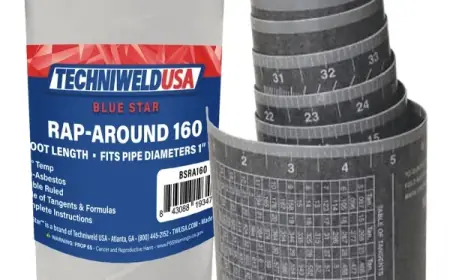When Is the Right Time for Pet Euthanasia? Signs to Look For
Euthanasia can be a compassionate, humane option that allows pets to pass peacefully and with dignity. Many pet owners also choose in home euthanasia, which lets pets remain in a familiar, comforting environment surrounded by family, reducing stress and creating a calm setting for their final moments.

Deciding when it’s time for a beloved pet to be euthanized is one of the most difficult choices a pet owner can face. Pets often hide discomfort, and families can struggle to determine whether continued treatment is truly helping or if their furry friend is quietly suffering.
Euthanasia can be a compassionate, humane option that allows pets to pass peacefully and with dignity. Many pet owners also choose in home euthanasia, which lets pets remain in a familiar, comforting environment surrounded by family, reducing stress and creating a calm setting for their final moments.
Read on, to know more!
Understanding Pet Euthanasia
Pet euthanasia is a medical procedure performed by licensed veterinarians to humanely end the life of an animal experiencing severe pain, chronic illness, or declining quality of life. The goal is to ensure the process is painless and stress-free for both the pet and the family.
Choosing in home euthanasia has become increasingly popular because it allows pets to stay in their own surroundings rather than a clinical setting. Being in a familiar home environment often reduces anxiety and helps the pet feel safe and comfortable. Trained veterinarians guide families through every step, explaining the procedure, providing emotional support, and helping ensure the process is dignified for both the pet and their loved ones.
Signs Your Pet May Be Ready for Euthanasia
Recognizing the signs that a pet may be nearing the end of life can help owners make compassionate decisions. These signs can be physical, behavioral, or emotional:
Physical signs:
-
Persistent or worsening pain that is difficult to manage with medication
-
Difficulty eating, drinking, or swallowing
-
Loss of mobility or trouble walking, climbing, or moving around
-
Frequent accidents or inability to maintain hygiene
-
Chronic vomiting, diarrhea, or other persistent health issues
Behavioral or Emotional Signs
-
Withdrawal from interaction with family or other pets
-
Loss of interest in activities, toys, or walks that were once enjoyable
-
Increased anxiety, distress, or restlessness
-
Unusual aggression or irritability that is out of character
-
Changes in sleep patterns, including excessive sleeping or restlessness at night
It is important to observe your pet’s daily quality of life. Tools like the “quality of life scale” can help determine whether their remaining time is comfortable or filled with suffering. Consulting a veterinarian is essential to confirm observations and provide professional guidance.
Making the Decision
Deciding on euthanasia is never easy. Families often benefit from asking themselves and their veterinarian thoughtful questions:
-
Is my pet experiencing unmanageable pain or discomfort?
-
Are they able to enjoy normal activities, like eating, walking, or playing?
-
Would prolonging life improve quality or only extend suffering?
-
What options exist for a gentle, low-stress euthanasia experience?
Veterinarians can explain how in home euthanasia works, what to expect during the procedure, and how to prepare emotionally. Their guidance can help families feel confident that they are making the most compassionate decision for their pet.
Preparing for a Peaceful Goodbye
Creating a calm and comforting environment at home helps both the pet and the family. Simple steps can make the process smoother:
-
Choose a quiet, familiar space in the home.
-
Bring favorite blankets, toys, or beds to make the pet feel secure.
-
Allow family members to spend quality time with the pet before the procedure.
-
Keep the atmosphere calm and avoid distractions or interruptions.
Being emotionally prepared can also help owners support their pet through the process. A peaceful, familiar environment can ease stress for everyone involved and allow for meaningful goodbyes.
Aftercare and Support
After euthanasia, families may consider pet aftercare services to honor their pet’s memory. A professional team would offer options often including cremation, keepsakes like paw prints or locks of fur, and memorial items that provide comfort during the grieving process. These services can be an important part of closure, helping families process their loss and celebrate the life of their beloved pet.
Grief support is another essential component. A team that understands that it's not just a work but a contribution offers guidance, and groups, to help families navigate the emotional journey that follows the loss of a pet. Thoughtful aftercare ensures that pets are remembered with love and respect, giving families a sense of comfort and closure.
Conclusion
In the end, deciding on euthanasia is one of the most difficult choices a pet owner can face, but it can also be the kindest and most compassionate decision when a pet’s quality of life is declining. Choosing options like in-home euthanasia allows pets to pass peacefully in a familiar, comfortable environment, surrounded by their loved ones. Additionally, pet aftercare services provide meaningful ways to honor and remember a pet’s life, from keepsakes to memorials. By recognizing signs of suffering, consulting a veterinarian, and preparing emotionally, families can make thoughtful choices that prioritize the well-being and dignity of their beloved pets.
What's Your Reaction?
 Like
0
Like
0
 Dislike
0
Dislike
0
 Love
0
Love
0
 Funny
0
Funny
0
 Angry
0
Angry
0
 Sad
0
Sad
0
 Wow
0
Wow
0


















































